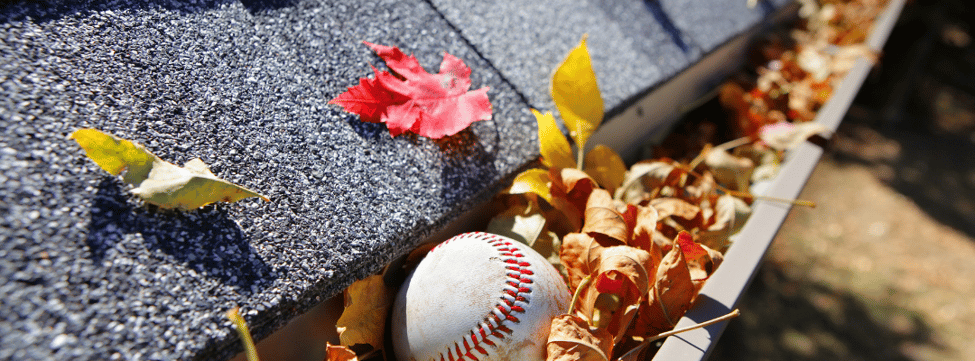Winterizing Your Property: Must-Know Tips for a Warm and Stress-Free Season
As the days grow shorter and the air turns crisp, it's time to start preparing your property for winter. Getting your home, garden, and exterior ready before freezing temperatures and snowstorms hit will save you money, prevent damage, and ensure you have peace of mind all winter long. In this blog, we’ll walk you through the essential steps to winterize your property.
1. Inspect and Maintain Your Roof and Gutters
A well-maintained roof and drainage system will protect your home from snow accumulation, ice dams, and leaks.
Checklist:
Inspect the roof for missing shingles or damaged tiles, and repair them to prevent water leaks. Consider hiring a certified roof inspector in Canada.
Clear out gutters and downspouts to ensure water flows freely and doesn’t freeze, causing ice dams.
Install gutter guards to prevent leaves from clogging your drainage system.
Check for gaps or cracks in flashings around chimneys, vents, and skylights.
Learn more from Homeowner Winter Preparation Tips by the Government of Canada.
2. Seal Drafts and Insulate Windows & Doors
Heat loss through windows and doors can make your home less energy-efficient, causing higher heating bills.
Checklist:
Weatherstrip doors and windows to block cold air.
Use caulk or spray foam to seal gaps around window frames, baseboards, and exterior outlets.
Install thermal curtains to help retain heat.
Inspect door sweeps and thresholds to make sure they seal properly.
Consider applying for the Canada Greener Homes Grant if you plan to upgrade insulation or windows.
3. Service Your HVAC System and Chimney
Ensure your heating system is in peak condition to avoid breakdowns on the coldest nights.
Checklist:
Have your furnace or boiler serviced by a licensed professional. Regular maintenance keeps it running efficiently and prevents emergency breakdowns. Use the HRAI Contractor Locator to find a certified HVAC technician in Canada.
Replace air filters for better airflow and indoor air quality.
Test the thermostat and consider upgrading to a smart thermostat for energy savings.
Clean and inspect your chimney if you use a fireplace or wood stove.
4. Protect Your Pipes from Freezing
Frozen pipes can burst and cause expensive water damage. Taking preventive measures will save you from costly repairs.
Checklist:
Insulate exposed pipes in basements, garages, and crawl spaces.
Disconnect garden hoses and drain outdoor faucets.
Install faucet covers on external taps to prevent freezing.
Leave cabinets open under sinks to allow warm air to circulate around pipes during severe cold.
Learn how to prevent and manage freezing pipes from Insurance Bureau of Canada.
5. Prepare Your Yard and Outdoor Spaces
Snow and ice can damage your landscape and outdoor fixtures. Protect your yard now to make spring maintenance easier.
Checklist:
Rake leaves and aerate your lawn to prevent mold growth.
Trim tree branches near power lines to avoid power outages from falling limbs.
Store outdoor furniture in sheds or garages to protect it from snow and ice.
Drain your sprinkler system before the first frost.
Use the Canadian Gardening Guide to learn more about winterizing your lawn and garden.
6. Check Your Insulation
Winter storms in Canada can be harsh, so it’s essential to have supplies on hand to stay safe and warm.
Checklist:
Purchase snow shovels, ice melt, and a snow blower (if needed) and make sure they’re in good condition.
Stock up on salt or sand to keep pathways safe from ice.
Prepare an emergency kit with flashlights, batteries, bottled water, and non-perishable food in case of power outages. See what to include in a Canadian Winter Emergency Kit.
Keep warm clothing and blankets accessible for extreme cold weather.
7. Stock Up on Winter Essentials
Be ready for winter storms with essential supplies to avoid last-minute scrambles.
Checklist:
Purchase snow shovels, ice melt, and a snow blower (if needed) and ensure they’re in working order.
Stock up on salt or sand to keep driveways and walkways safe.
Keep emergency supplies such as flashlights, batteries, bottled water, and non-perishable food on hand.
Prepare an emergency kit for your car, including blankets, jumper cables, and a first-aid kit.
8. Ensure Safety Features Are Working
Safety should never be overlooked, especially when heating systems and potential winter hazards are involved.
Checklist:
Test smoke and carbon monoxide detectors to ensure they are functioning properly.
Replace batteries in detectors if needed.
Inspect fire extinguishers and make sure they’re accessible.
Review your home insurance policy to confirm it covers potential winter-related damage.
9. Inspect and Maintain Driveways, Walkways, and Decks
Snow, ice, and freezing temperatures can damage concrete, asphalt, and wood surfaces.
Checklist:
Fill cracks in driveways and walkways to prevent ice from expanding them.
Reseal wooden decks to protect them from moisture.
Mark pathways and driveways with stakes or flags so they’re easy to find after heavy snowfall.
Arrange snow removal services if you prefer not to shovel yourself.
10. Review and Adjust Energy Consumption
Winter is the perfect time to adopt smart energy-saving strategies to reduce costs and be environmentally friendly.
Checklist:
Set your thermostat to 68°F (20°C) during the day and lower it at night or when you’re away.
Use space heaters in small rooms instead of heating the whole house.
Install programmable thermostats to adjust temperatures automatically.
Switch to energy-efficient lighting to offset the extra energy used for heating.

